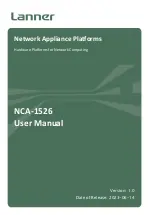
132
ASUS VPN ADSL Router
Appendix
Appendix
Network
A group of computers that are connected together, allowing them to
communicate with each other and share resources, such as software, files, etc.
A network can be small, such as a LAN, or very large, such as the Internet.
Network mask
A network mask is a sequence of bits applied to an IP address to select the
network ID while ignoring the host ID. Bits set to 1 mean “select this bit”
while bits set to 0 mean “ignore this bit.” For example, if the network mask
255.255.255.0 is applied to the IP address 100.10.50.1, the network ID is
100.10.50, and the host ID is 1. See also binary, IP address, subnet, “IP Addresses
Explained” section.
NIC (Network Interface Card)
An adapter card that plugs into your computer and provides the physical interface
to your network cabling, which for Ethernet NICs is typically an RJ-45
connector. See Ethernet, RJ-45.
packet
Data transmitted on a network consists of units called packets. Each packet
contains a payload (the data), plus overhead information such as where it came
from (source address) and where it should go (destination address).
Ping (Packet Internet (or Inter-Network) Groper)
A program used to verify whether the host associated with an IP address is
online. It can also be used to reveal the IP address for a given domain name.
Port
A physical access point to a device such as a computer or router, through which
data flows into and out of the device.
PPP (Point-to-Point Protocol)
A protocol for serial data transmission that is used to carry IP (and other protocol)
data between your ISP and your computer. The WAN interface on the SL6000/
SL6300 uses two forms of PPP called PPPoA and PPPoE. See also PPPoA,
PPPoE.





































